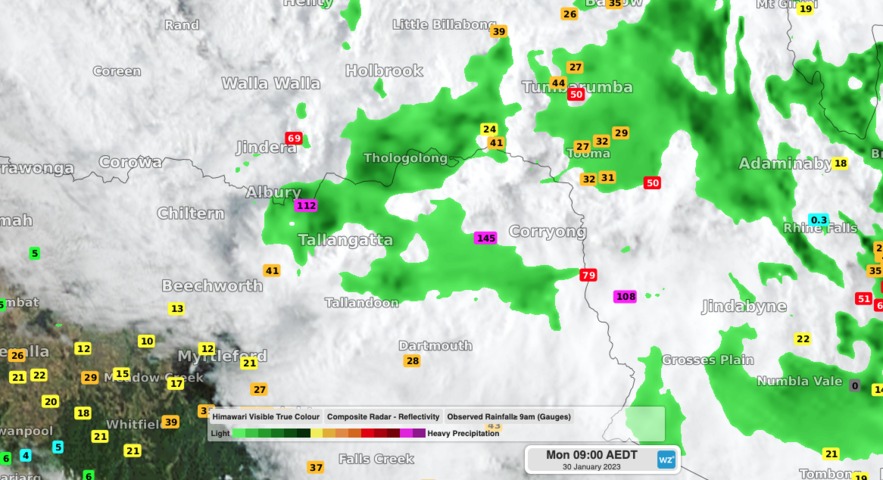Relentless rain has fallen along parts of the NSW-Vic border during the past 24 hours, with Albury registering its wettest day since 1863.
A near-stationary band of heavy rainfall developed along a convergence line in the Albury-Wodonga region of southern NSW and northeast Vic on Sunday night.
This deluge, which was being fuelled by a mass of unusually humid air, produced an entire summer’s worth of rain in just 24 hours at some locations.
Video: Composite radar, satellite and rainfall observations during the 24 hours ending at 9am on Monday, January 30, 2023.
Albury Airport collected 132 mm during the 24 hours ending at 9am on Monday. This is Albury’s wettest day since 1863 and roughly equal to its long-term seasonal summer average of 135 mm. Some of the most intense rain fell overnight, with 65mm hitting the gauge during the 6 hours ending at 2am on Monday.
Albury has one of Australia’s longest available periods of records for rainfall, with data stretching back to 1858. This past 24 hour’s rain was the 2nd highest daily total in this lengthy period, beaten only by 167.6 mm from April 1 in 1863.
Nearby, the 134 mm of rain that fell at Hume Dam during the 24 hours to 9am on Monday, which was its highest daily total in records dating back to 1922.
Across the border in northeast Vic, Hunters Hill picked up 149.6 mm in the same period, including 48.4 mm in just three hours.
Showers will ease over southern NSW and northern Vic as a low pressure trough moves further north, away from the region.






